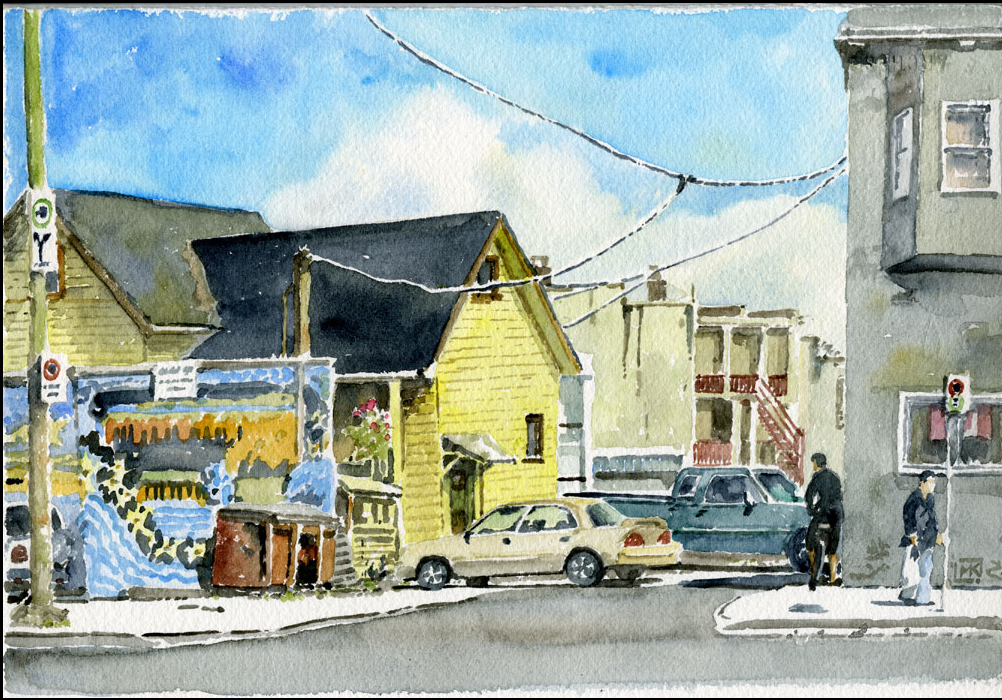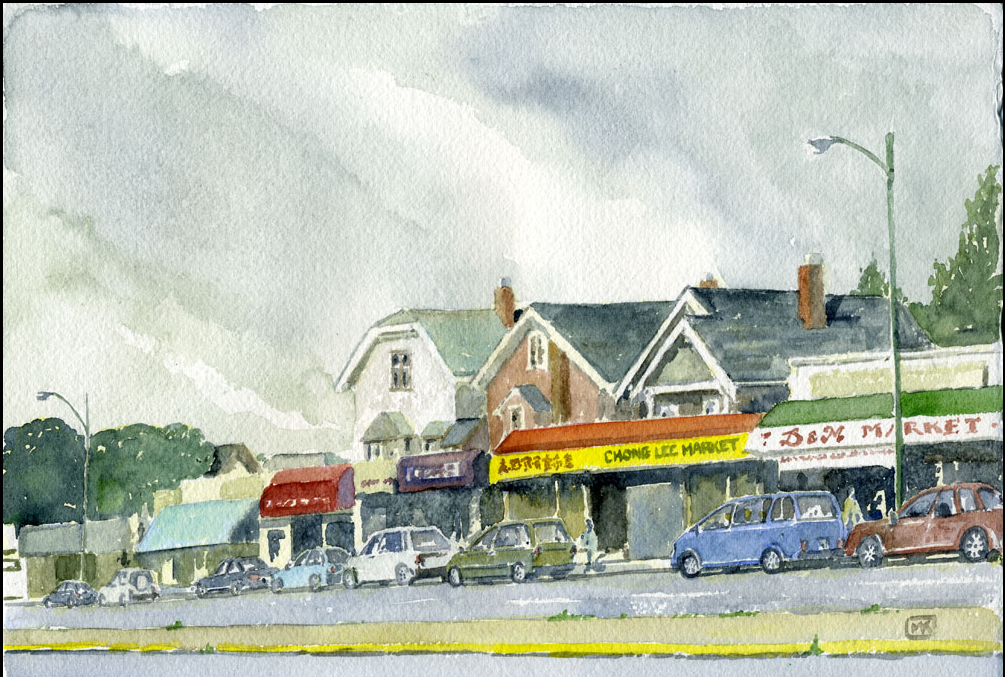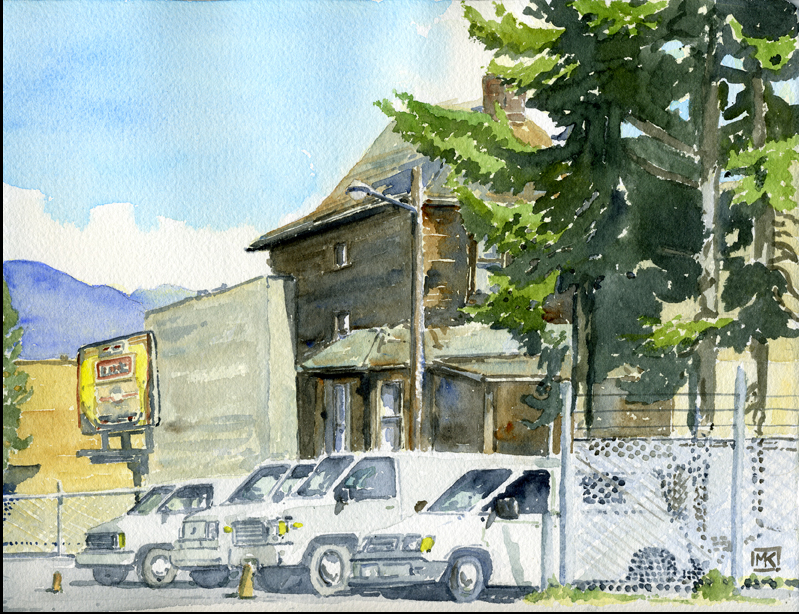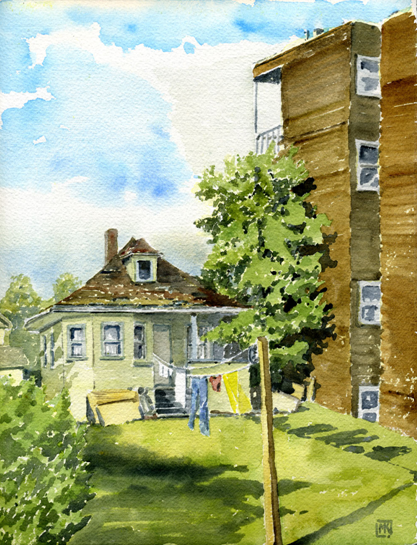A few weeks ago, Michael Kluckner ran a painting of a Kitsilano house on his FB page. I googled the address and was astonished to find that the house was still there on busy 4th Avenue, buried behind an ice-cream parlour. Michael tells me that only a handful of these buried houses remain, and he kindly wrote this story illustrated by his paintings from 2010 and 2011 that appeared in Vanishing Vancouver: The Last 25 Years.
Now a story in Vancouver Exposed: Searching for the City’s Hidden History.
By Michael Kluckner
In the interwar years, Vancouver’s commercial streets filled in with single-storey shops, many of them simple boxes with no decorative trim. They were the utilitarian independent stores of the “streetcar suburbs” like Grandview’s Commercial Drive and the West End’s Robson Street. A typical Vancouver commercial street, right up until the 1970s, was a mix of shops, a few apartment buildings, and houses.
Especially during the Great Depression of the 1930s, owners of these houses tried to make their properties viable by adding commercial storefronts in what had been the houses’ shallow front yards.

West 4th Avenue:
Just east of Arbutus, 2052 West 4th Avenue (above) is a 1905 house with a 1927 addition on the front. Over the years it has housed a dry cleaner, a build-it-yourself radio shop, and a poster store catering to the hippies in nearby rooming houses. It was nicknamed The Rampant Lion, after the tenants’ rock band.
Visible only from Fraser Street and the back lane, the 1897 house at 708 East Broadway is hidden behind a storefront built by W.M. McKenzie. Later, an electrician named John Grumey, converted it into “Launderama.” It has been further subdivided with a tailor occupying half of the storefront.

Renfrew:
The best set of buried houses in the city are on Renfrew just south of 1st Avenue. The houses were built in 1937, 1921 and 1926 respectively, indicating the slow settlement of Vancouver east of the old city boundary at Nanaimo Street. A small retail hub developed there due to the Burnaby Lake interurban line stop which ended service in 1952.

There are other buried houses on West Broadway near Balaclava, on 4th Avenue just west of Burrard, and Granville around 13th.
A buried house, probably built in 1907 with a horrid concrete-block shop/factory front attached to it is still at 350 East 10th Avenue, directly behind the Kingsgate Mall and next to a Telus parking lot.

Until a few years ago, a 1904 house was built at the back of its lot to allow for shops in front on the northeast corner of Broadway and St. Catherines. The shops were demolished a generation ago, the house a few years back. Townhouses now occupy the site.

The most visible buried houses are the set on Denman Street just up from the beach.
Houses, just like other buildings, adapt or die. There is not a lot of old Vancouver, at least on the commercial streets, that can adapt to the new reality of land prices, taxes, the desire to densify, and the changing retail landscape.
Related:
* More of Vancouver’s Buried Houses
Michael Kluckner is a writer and artist with a list of books that includes Vanishing Vancouver and Toshiko. His most recent book is a graphic novel called 2050: A Post-Apocalyptic Murder Mystery. He is the president of the Vancouver Historical Society and a member of the city’s Heritage Commission.

